Discussed by
Matthew PillingIt has already been shown that much of the CIAM approach to urbanism was derived from earlier planning concepts, Eric Mumford’s intent was to instead trace the development of CIAMs urbanistic discourse.
The main focus of the CIAM was to create an Avante-Garde within the newly emerging anti-traditionalist architecture of the early twentieth century. Instead of simply accepting or rejecting CIAMs polemics, Eric Mumford reveals how CIAM defined new and perhaps overly ambitious socially transformative roles for architects and architecture, by combining certain design strategies with a passionately held conviction that architecture should serve the many and not the few.
CIAM 1, 1928 - 1930 (Chateau of La Sarraz, Switzerland)
The first CIAM Congress was the result of efforts from several directions, most significantly including the international campaign in favor of Le Corbusier’s League of Nations design, and the Weissenhof meetings, involving members of the Berlin Ring and the Swiss Werkbund in 1927. From its inception, CIAM was conceived as an instrument of propaganda to advance the cause of the new architecture that was developing in Europe in the 1920’s.
Giedion the CIAM secretary wrote that the goals of CIAM were:
a) to formulate the contemporary program of architecture
b) to advocate the idea of modern architecture
c) to forcefully introduce this idea into technical, economic and social circles
d) to see to the resolution of architectural problems
The congress concluded that the future, whether as capitalist or a communist technocracy, was to be organized from above along the lines thought to be best for the general welfare of industrial societies everywhere.
CIAM 2, 1929 (Frankfurt, “Die Wohnung fur das Existenzminimum”)
The intent throughout Frankfurt was to demonstrate the use of assembly-line methods for socialist (or at least social democratic) ends. In the midst of this, the proposed second CIAM Congress was given the theme “the Minimum Subsistence Dwelling" the focus being on design solutions to the problem of high rents for low wage earners.
The organs of CIAM were defined as the “Congress” itself, the “General Assembly” that would meet every year or two, as called together by the president; and the CIRPAC, which had been proposed by Le Corbusier and created at La Sarraz. The CIRPAC members were to be called “Delegates,” with at least one from each CIAM national group. The CIRPAC was to plan each Congress and to carry out the decisions of the congress, though the later proved to be difficult.
CIAM 3, 1930: (Brussels “Rationelle Bebauungsweisen”)
The real theme of CIAM 3 was a discussion of Gropius’ question, “Low-, Mid- or High-Rise Building?” an investigation which paralleled Le Corbusiers views. Following findings from Bohemia and Kaufman however, Gropius and Giedion shifted the debate over building heights away from the strictly economic justifications toward the collective social and spiritual advantages of each type. So Groipius’ lecture “Low-, Mid- or High-Rise Building?” which could be considered the keynote address of the congress, began with the argument that reasoning in city planning should not be strictly economic but also should take into account “Psychological and Social Demands.”
The Functional City 1931 - 1939 - This was the most significant theoretical approach of CIAM, and began to dominate its discourse immediately following the Brussels Congress. The underlying concept was a simple one, Cornelius van Easteren asserted that “districts for the masses, with their high population densities, suffer the consequences of incorrect development.” He declared that the “many disadvantages” of these districts based on the mediaeval “block form of street walls and lot lines, were unnecessary.” The CIAM “Die Wohung fur das Existenzminimum” had demonstrated the fundamental importance of favorable solar orientation in low - cost apartments with their “intensely used rooms.” Consequently arguing that the best position for sunlight for a particular housing type should ensure the “direction of the whole apartment series.” He concluded that what are needed are not axial city plans, but new national development methods that could be extended to the planning of entire cities.
CIAM 4, 1933: (Athens: “The Functional City”)
Le Corbusier gave an address containing the most concise statement of his position on the idea of the Functional City. As he saw it, CIAM's task was to create forms, human truths and certainties, and to establish a prism to judge them. He insisted on the fundamental principle that urbanism was a three-dimensional science, and stressed that height was an important one of those dimensions. Through the bodily movement the three dimensions imply the notion of time, and our lives are regulated by the “solar regime” of twenty-four hours and the year, which “commands distances and heights.” The urbanist, he continued, must choose between two tendencies, to extend or to contract the city. If the latter was chosen, concrete and steel must be used to preserve the “essential joys” of the sky, trees and light. He emphasized that CIAMs judgements must be “Dwelling,” the first of a hierarchy of four functions; Dwelling, Work, Leisure and Circulation.
While the Garden City pattern satisfies the individual, he argued that it loses the advantages of collective organization. The Concentrated City, favored with modern techniques, assures the liberty of the individual within the housing fabric and organizes the collective life in relation to recreation.
After 1933 CIAM began to define itself as an international “building movement” with its own ideology of the Functional City. Rejected by both National and Socialism in Germany and Stalinism in the Soviet Union, the ideology was available to any modernizing “Authority” willing to risk its application.
CIAM 5, 1937: (Paris: “Logis et loisirs”)
Conditions for CIAM had changed dramatically for the worse since the first La Sarraz meeting eight years previously. National socialism had ended most of the new architectural directions in Germany, Le Corbusier had not been able to see his urbanistic ideas adapted in France, and the members who had gone to the Soviet Union in 1930 to apply CIAM methods there, were beginning to leave.
The program for CIAM 5 consisted of three talks, by Le Corbusier, on “Theoretical Solutions,” Sert, on “Application Case: Cities” and Szymon Syrkus, on “Application Case: Rural Areas.” The twenty other “Interventions and communications” at CIAM 5 were a mixture of reports by CIAM members and national groups, syndicalist friends of Le Corbusier, and other French political and intellectual figures.
CIAM 6, 1947: (Bridgewater, England: “Reunion Congress”)
MARs (Modern Architectural Research) after 1945 was a very different group than its prewar namesake. No longer a small Avante-Garde group, it had become a large club like institution with many prominent members well within the new mainstream of British Architecture and Town Planning. It was felt that MARs should not be primarily concerned with publicizing the principles of the ‘Athens Charter,‘ but should instead move on to examine “the impact of contemporary conditions upon architectural expression. This was proposed as a possible theme for the first congress to be held after the war.
At the Zurich CIRPAC meeting it was formerly declared that “the final aim of CIAM is to facilitate the practical application of its principles in each represented country,” to “give to communities a truly human aspect,” but added “we intend to enlarge the subject to include ideological and aesthetic problems.”
CIAM 7, 1949: (Bergamo, Italy)
In contrast to the ambitious hopes for CIAM expressed at Bridgewater, the Bargamo Congress revealed that CIAM was not going to regain its prewar elan as an avante-garde organization, owing to internal conflicts within.
Officially CIAM 7 issued a resolution, whose 7 points concerned:
1. The Dwelling, which should be orientated to the sun, quiet and efficiently organized
2. Laboratories for research in new construction techniques
3. Scale, which should always be indicated [on drawings]
4. Land-use Legislation
5. Unity of visual groups
6. Necessity of punctual Automobile and pedestrian circulation
7. Free disposition of the ground plane
CIAM 8, 1951: (Hoddesdon, England: “The Heart of the City”)
The MARs group established commissions to prepare for the congress which mirrored those of the CIAM itself:
I. Town Planning
II. Visual Art
III. New Building Techniques
IV. Social Background of the Core
Of the talks presented at CIAM 8, the most significant was Serts opening talk entitled “the Theme of the Congress: The Core.” He argued that in developing countries, the cores could be places where new technologies such as television screens would soon be available, and this could “put these people in immediate contact with the world.” People without access to radios could “listen to the old speaker on the public square,” and “could see the images on the television screen,” which would enhance the importance of these places.
Such civic centers would consolidate [democratic] governments; for the lack of them and the dependence of the people on controlled means of information makes them more easily governable by the rule of the few. The creation of these centers is a government job (Federal, State or Municipal). These elements cannot be established on a business basis. They are necessary for the city as a whole and even for the nation, and they should be publicly financed.”
CIAM 9, 1953: (Aix-en-Provence, France: “The Charter of Habitat”)
The work program for CIAM 9 stated that “CIAM 9 will not resume the study of.... [the] four functions but will concentrate upon Living and everything that man plans and constructs for living.”
CIAM 10, 1953: (Dubrovnik, Yugoslavia: “The Charter of Habitat”)
The group comprising of Howells, Smithsons and John Voelcker concluded that the lack of a definite conclusion from Aix was the fault of the administration of CIAM, and that “the accepted definitions and methods of work within CIAM are not adequate for dealing with the problems with which we are faced today.”
They acknowledged that the Athens Charter was of great historical importance, but also stated, “it is clear that the contents of charter are no longer instruments for creative development.” Nor did they find the titles of the permanent commissions “relevant to the problem with which we are concerned.” rather than these “analytic” categories, the group proposed new “synthetic” categories, based on the terminology of Patrick Geddes’s Valley Section.
The CIAM 10 Program, Commission Structure, and Schedule were finally set at a last minute meeting in Padua. The group in attendance agreed that CIAM 10 had three tasks:
I. To prepare the Charter of Habitat
II. To Extract New Material on Relationships from the New Grids for the Charter
III. To determine the Future of CIAM
Sert opened the Congress proceedings by reading a “message of Le Corbusier” to CIAM 10, It posed the question of “crisis or evolution?” for CIAM and contrasted the “generation of 1928” which had formulated the Athens Charter, with the “generation of 1956” which will now “take command.” this generation should now enter into “practical action” taking account of “urgent world-wide needs... To design, express and even predict” the future. He concluded, “Act so that the CIAM continue in their creative passion, in disinterest, reject the opportunists or hot head. Good luck, long live the SECOND - CIAM! Your friend LE CORBUSIER”
The final CIAM meeting was held in September of 1959 in Otterlo where it was announced the name CIAM would longer be used. No further meetings where ever held or publications ever issued, however due to the lack of clarity concerning CIAM's fate it is quite difficult to say precisely where CIAM ends and Team 10 (officially formed in 1945) begins.
The conclusion of CIAM:
By researching and reviewing not just the congress meetings themselves, but also the preparatory meetings, Eric Mumford affords us a greater understanding of the groups complexities.
The CIAM delegates were often working in ever changing political environments and came from vastly contrasting cultural backgrounds. Despite a large number of highly successful collaborations between delegates from varying national groups, it often proved difficult focusing their collective efforts towards a single goal. This was further hindered, on numerous occasions, by individual members attempting to steer the CIAM to suit their own agenda.
Although highly influential, the majority of CIAM's proposals remain unrealised or incomplete and a number of publications based on their collaborative works failed to even materialise. Whilst highly successful in its formative and early years, the CIAM seemingly lost its focus in later years and became impeded by bureaucracy, culminating in the disintegration of CIAM.
 [Image: Tokyo at night, courtesy of NASA's Earth Observatory].
[Image: Tokyo at night, courtesy of NASA's Earth Observatory].

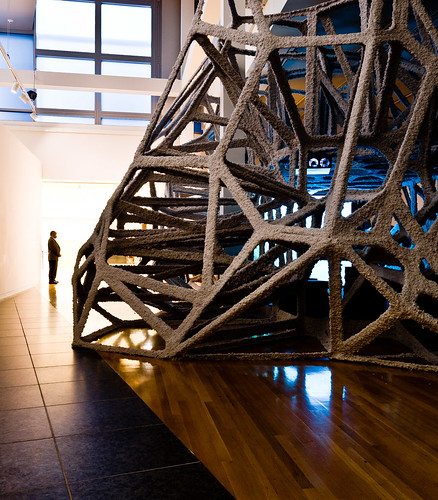

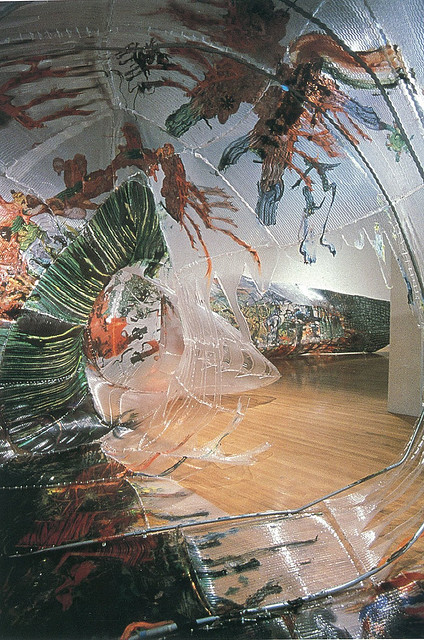

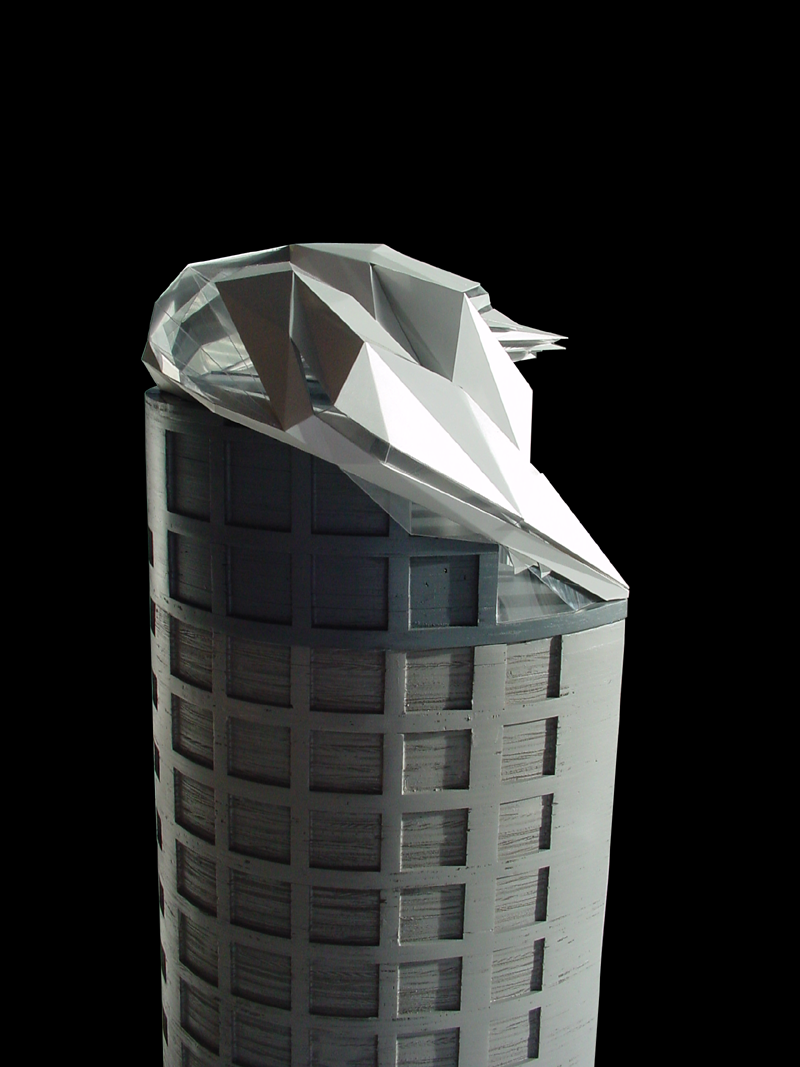
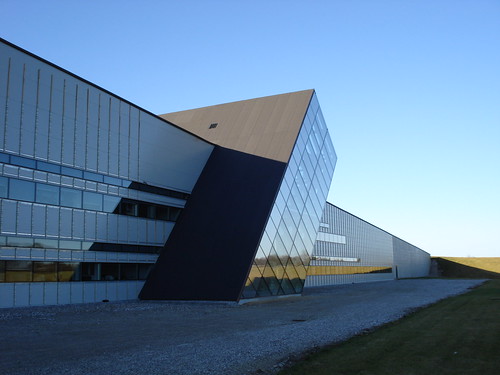


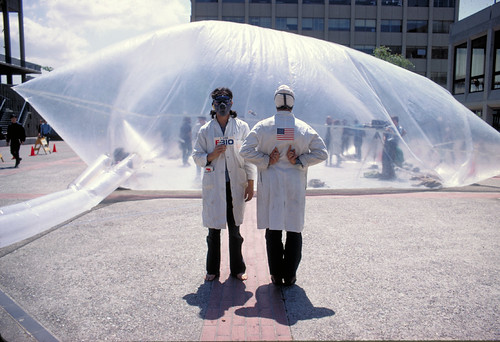






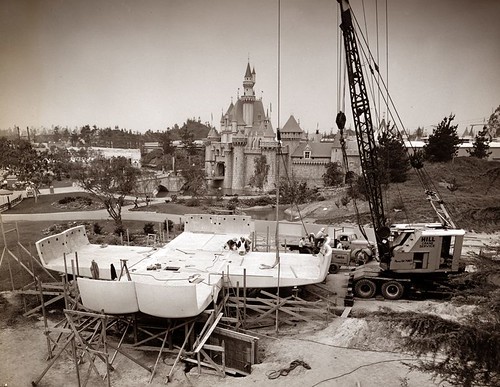


 The most interesting parts of any house museum, in my opinion, are the service spaces.
The most interesting parts of any house museum, in my opinion, are the service spaces. Vizcaya was planned primarily around the public and entertaining rooms, which leaves only awkward leftover spaces for the numerous servants which were required in this time period. Oddly enough, the kitchen is on the 2nd floor, not in the basement (but we'll get to that later!).
Vizcaya was planned primarily around the public and entertaining rooms, which leaves only awkward leftover spaces for the numerous servants which were required in this time period. Oddly enough, the kitchen is on the 2nd floor, not in the basement (but we'll get to that later!).  The first of these service spaces is a cupboard off the dining room (marked passage on the plan above in blue). Functioning as a small butler's pantry, the space also worked as a hall between the
The first of these service spaces is a cupboard off the dining room (marked passage on the plan above in blue). Functioning as a small butler's pantry, the space also worked as a hall between the  The ceiling has a gorgeous painted wood ceiling with painted wood gates hiding the service cupboard which houses china storage and wash-up sink. The gilded English china seen here has an interesting story which I'll talk about at the end of this post. PS: don't you just love these painted wood cabinets?
The ceiling has a gorgeous painted wood ceiling with painted wood gates hiding the service cupboard which houses china storage and wash-up sink. The gilded English china seen here has an interesting story which I'll talk about at the end of this post. PS: don't you just love these painted wood cabinets? Located on the opposite side of the Tea Room (seen on the plan above in green), the main butler's pantry is larger than most modern household kitchens. The room boasted the most modern of conveniences for the time period, including the electric annunciator panel above which showed where a servant was required when rung for.
Located on the opposite side of the Tea Room (seen on the plan above in green), the main butler's pantry is larger than most modern household kitchens. The room boasted the most modern of conveniences for the time period, including the electric annunciator panel above which showed where a servant was required when rung for. Another modern contraption was the master clock, seen behind the cabinets above, which controlled the time on 10 clocks throughout the house (much like many schools have today).
Another modern contraption was the master clock, seen behind the cabinets above, which controlled the time on 10 clocks throughout the house (much like many schools have today). Above you can see the painted door into the tea room. The open countertops have been converted into glassed-in display cases for the many sets of china Vizcaya posesses.
Above you can see the painted door into the tea room. The open countertops have been converted into glassed-in display cases for the many sets of china Vizcaya posesses. 
 The china seen here was ordered by Deering from England for his house in Chicago and was originally brought over, unfortunately, on the Titantic. The china obviously had to be remade and was shipped over a few years later (hand gilding isn't fast!)
The china seen here was ordered by Deering from England for his house in Chicago and was originally brought over, unfortunately, on the Titantic. The china obviously had to be remade and was shipped over a few years later (hand gilding isn't fast!) 



 ::
::











 [Image: Global map of "optimal intermediate locations between trading centers," based on the earth's geometry and the speed of light, by
[Image: Global map of "optimal intermediate locations between trading centers," based on the earth's geometry and the speed of light, by  [Image: Diagrammatic explanation of a "light cone," courtesy of
[Image: Diagrammatic explanation of a "light cone," courtesy of  [Image: An otherwise unrelated image from NOAA featuring a geodetic
[Image: An otherwise unrelated image from NOAA featuring a geodetic